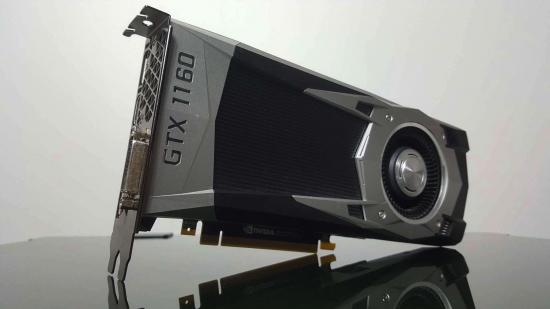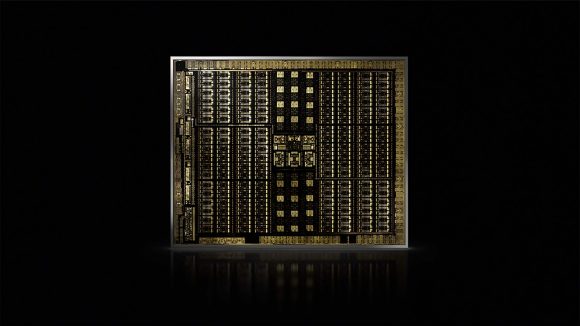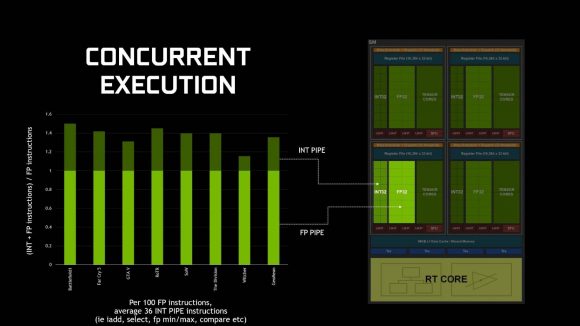Well, this is unexpected. In a move surely designed to make buying a new graphics card as painfully obfuscated as possible, Nvidia is rumoured to now be announcing a GTX 1160 mainstream card alongside the expected RTX 2060 in January.
Splitting the Turing generation up between ray tracing-capable and traditional GPUs has long been speculated about, but I’m not sure anyone really expected it to separate them by quite this distance. We had maybe expected Nvidia to potentially draw a line between RTX and GTX cards in the 20-series, but this makes the GTX cards look like an entirely separate generation of GPU.
The 11-series cards are reportedly still going to be using the Turing architecture, and importantly will continue to utilise Turing shaders, with all their goodness, but will not be supportive of any higher-end ray tracing, or potentially AI-based features, such as DLSS. This also means that there will not be an RTX 2050 graphics card, with January’s RTX 2060 being the final word in the 20-series of Nvidia GPUs.
The rumour has come to light via a tip to Videocardz and through a story on Expreview (hidden behind a password) which claims that there will indeed be a split in the Turing generation of graphics cards. Though the two sources do seem to differ on what exact form that will take. The Expreview post states that Nvidia will utterly brick its naming conventions and offer a GTX 1660 Ti, while the Videocardz tip claims that it will in fact just be a more sensible GTX 1160 release.
As ever, these are completely unsubstantiated rumours, so sodium at the ready and all that…
But the expectation is the GTX 11-series GPUs would still use the Turing architecture – rather than just a mild Pascal tweak – but without the Tensor or RT Cores built into them. That still leaves the potential TU116 GPU with all the goodness of the Turing shaders, which is still pretty significant from a traditional gaming performance standpoint.
That means the GTX 1160 will still be capable of the concurrent execution feature, allowing the Turing cores to execute both integer and floating point instructions at the same time, rather than having to park some silicon while it waits for the other to finish its job.
Top GPUs: These are the best graphics cards of today
The Turing SMs also have an improved memory architecture, access to variable rate shading, and the ability to execute content adaptive sharing. We’ve covered all these performance enhancing features in our Nvidia Turing architecture deep-dive, but in essence it means that even without the ray tracing/AI good stuff the Turing cores should still deliver a hefty performance gain in the 11-series.
Splitting the Turing generation might feel a little confusing, especially having 20- and 11-series GPUs around at the same time, but it does at least mean that we should get new Nvidia graphics cards in the mainstream that have a great price and performance ahead of the previous generation. Without the expensive RT and Tensor Cores inside it the TU116 can be a far more svelte GPU, and hence a lot cheaper to produce, and potentially with higher yields too.
We don’t know what this will mean in terms of the memory configuration, however. It’s possible Nvidia will also eschew the pricey GDDR6 memory in favour of the older GDDR5/X.
But it’s going to be fascinating to see just how close to the traditional gaming performance of an RTX 2060 the GTX 1160 will get when it launches. The speculation is the RTX 2060 will be around the same level as a GTX 1070, but if the GTX 1160 has to top last generation’s GTX 1060 that doesn’t leave much of a gap between them.
And the RTX 2060’s ray tracing capability won’t be enough to justify that card over a GTX 1160 if their rasterized gaming performance is within a few percentage points of each other.
How Nvidia juggles all that – if this admittedly rather lightweight festive rumour turns out to be true – will be key to the next 12 months of graphics card sales.


